 If you're like me, you've enjoyed seeing some of the really amazing photographs produced over the years by the Hubble Space Telescope like this one of the Cat's Eye Nebula. Whether your interest is in the scientific advances associated with its imaging or just the sheer beauty, I think most all of us find the Hubble images uniquely fascinating.
If you're like me, you've enjoyed seeing some of the really amazing photographs produced over the years by the Hubble Space Telescope like this one of the Cat's Eye Nebula. Whether your interest is in the scientific advances associated with its imaging or just the sheer beauty, I think most all of us find the Hubble images uniquely fascinating. Wednesday, January 28, 2009
Help Choose Where to Point Hubble
 If you're like me, you've enjoyed seeing some of the really amazing photographs produced over the years by the Hubble Space Telescope like this one of the Cat's Eye Nebula. Whether your interest is in the scientific advances associated with its imaging or just the sheer beauty, I think most all of us find the Hubble images uniquely fascinating.
If you're like me, you've enjoyed seeing some of the really amazing photographs produced over the years by the Hubble Space Telescope like this one of the Cat's Eye Nebula. Whether your interest is in the scientific advances associated with its imaging or just the sheer beauty, I think most all of us find the Hubble images uniquely fascinating. Saturday, January 24, 2009
Astronomical Tunes
New Texas Astronomical Society Member
Sunday, January 18, 2009
City Lights
Our youngest sons are just about to turn 24. When they were small, we could sit in the backyard and clearly see the Milky Way rising up from the southern horizon and crossing overhead. I can't see it at all now and haven't been able to for probably 10 years or more.
While I can still enjoy observing from my own yard, the best targets are obviously the moon and planets... dim fuzzies are just too dim. As an example of the night-time illumination in my area, see the photo City Lights to the right. No, that wasn't taken during daylight. Look closely and you'll notice some faint star trails and even Polaris just to left of center. That shot was taken around midnight under clear skies; the exposure was 30 minutes at F/11 and ISO 200. Compare it to Twinkle ..., taken by Jamal Alayoubi in the Swiss countryside northeast of Lake Geneva. His exposure was almost 4 times as long at F/5 and ISO 500.
One of the most dramatic examples of just how bad light pollution has gotten in certain areas is the light pollution maps at The Night Sky in the World. To see how severe the problem has gotten in my hometown, check out this light pollution map for Dallas, Texas provided by cleardarksky.com. Mesquite is about half-way between the center of the image and the right side. Ouch!
While it is a shame to lose the connection our ancestors had with the sky, there are serious reasons for concern over light pollution including wasted energy, upsetting the natural rhythms of nocturnal animals and birds and possibly even impacts to our own health. The good news is that the issue seems to be getting more attention in the press. National Geographic published a great article on the subject this past November. And while reviewing the International Dark-Sky Association web site for other media coverage, I discovered that Think, one of my favorite programs on our local PBS radio station, KERA, recently highlighted the subject of light pollution. Hopefully, the increased attention - possibly aided by the International Year of Astronomy 2009 events - will begin to make a difference. I'd love for my grandkids to some day see the Milky Way from my backyard.
Sunday, January 11, 2009
First Full Moon of 2009
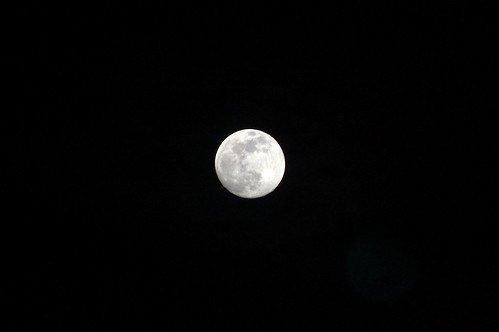
Nearly Full Moon, originally uploaded by neatonjr.
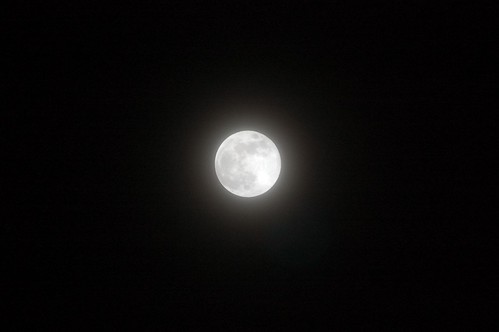
Hazy Moon, originally uploaded by neatonjr.

Moon Ring, originally uploaded by neatonjr.
A few quick shots to record the lunar start to IYA2009. Snapped one Friday when it wasn't quite full yet, then tried again this evening once it was full. Too many clouds, so I never got a clear view. Around midnight, though, I stepped out one last time to catch a spectacular moon ring! That definitely made up for missing out on a clear view tonight.
It was interesting to note that the moon was nearly straight overhead when I took the moon ring shot above. Not only was it near the zenith, but was about 73 degrees above the horizon. Why so high? As Astroprof explains, it has to do with the earth's tilt and the fact that since the full moon is directly opposite the sun, during the time of year when the sun is low in the sky for our hemisphere the full moon is at its highest.
I am still researching but suspect that the moon being nearly straight overhead contributed to how large the moon ring was. I'll post more when I have an answer.
Saturday, January 10, 2009
And now for something completely different
Ok, so I'm off topic on this one, but the new DSO music director, Jaap Van Zweden, pulled off a variation on the traditional Viennese New Year Concert tonight - all three encores - and it was FUN!
I have to say with some embarrassment, I've donated a lot of money to the DSO over the years. No, not the donations the tax man recognizes - done plenty of those and proud of it. I'm talking about the number of times I've spent good money to attend a concert only to doze through some portion of it. It isn't that I don't enjoy the music... most of it I really enjoy. It's just that with season tickets some times I have to be there but am too tired or stressed to really focus on the music. Not tonight! It was an hour and a half of lively, moving music... I even enjoyed the Stokowski version of Pictures at an Exhibition.
I'm not the expert that each of my classically trained sons are (Brian on viola, Chris on trombone), but I do know what I enjoy and I thoroughly enjoyed all the music tonight. Of course, it might be a bit of nostalgia. Back when the DSO was less famous, they used to come and perform at area schools as part of their student outreach. Tonight's concert, with The Light Calvary Overture, The Typewriter and the Thunder and Lightning Polka took me straight back to grade school. Of course, now the schools go to the DSO - we were surrounded by kids from several area schools. I hope they enjoyed the concert as much as I did!
Friday, January 9, 2009
Seeing the Real Thing
Thursday, January 8, 2009
Astronomer's Friend
As cool as that is, the point of this post is something that takes this to the next level. I just received the following email (and I get email on my phone, so I saw it come in immediately):
Favorable observing conditions at Dallas
Based on your Default subscription.
Opportunities to observe at: (Clouds/Trans/Seeing)
01-08 @ Hour 19 for 4 hours (0%/Transparent/Good)
Check out your clock at http://cleardarksky.com/c/Dallaskey.html
- - - - - - - - - - - - - - - - - - - - - - - - - - - - - - - - - -
Consider a sponsorship of the Clear Sky Alarm Clock.
Reach over 3000 astronomers every week with your message.
Inquire at csacadmin@casazza.net
This tells me that the skies above Dallas will have no clouds, will be very transparent and will have good seeing at 7pm for the following 4 hours. Based on this, I can take a closer look at the clear sky chart itself and also see that it won't be incredibly dark until the wee hours when the moon sets, that the wind and humidity will be low and the tempurature moderate.
Very cool, huh? This is thanks to the efforts of Mark Casazza, who runs a site called Clear Sky Alarm Clock. When you sign up for Mark's service, you can configure one or several "alarms" that trigger an email like the one above when a specific set of conditions are coming up. I have one alarm (Default) that tells me when the seeing will be generally good at my home. I also have one that goes off when conditions are going to be excellent and one for when daytime solar observing on the weekend will be good. I won't go into the details of all the features here - go check it out for yourself.
Meanwhile, it's time for me to run... need to get ready to get the scope out and take advantage of the clear skies!
Wednesday, January 7, 2009
Family Affair
Tuesday, January 6, 2009
Spaceweather.com: 2009 Quadrantid meteor gallery
A Quiet Sun
IYA2009 shot for January 3rd. The Sun, shot with Nikon D40, 55-200mm VR lens at 200mm, through Baader solar film filter. Deep in the depths of the solar minimum, no sun spots in sight. For information on when sunspots are visible, be sure and check out SpaceWeather.com.
Moon, Venus and Photographers
Here's my post for 2nd day of the IYA2009.
Back in December 1956, when my Mother was 5 months pregnant with me, she and my Dad climbed the levee on the south side of the Trinity River below downtown Dallas and took a shot of the city skyline. Having recently had all my Dad's slides digitally scanned, we ran across that shot and decided to recreate it. We went down to the same spot with a family friend to shoot the skyline at sunset and after dark. You can see one of the skyline shots here.
While my Dad and Steve took a break from shooting downtown, I turned my camera on the two of them with the Moon and Venus in the sky behind us.
New Year Moon
This was a "first light" shot using my Nikon D40, new T-Ring and remote shutter control with my Meade LXD55 SN10. I had a devil of a time getting focus right - focusing the D-SLR at prime focus is a bit more difficult than the old Minolta SRT201 was - but I learned a lot and it was a beautiful night to be out under the sky.
Mercury at Twilight
One of my first targets for this year, Mercury hanging low in the western sky not long before sunset. Not as exciting as the view from the front-row seat spacecraft Messenger has, but still a beautify site. I only wish I'd gotten a good shot of Mercury, Jupiter, Venus and the Moon a day or two earlier.
Sunday, January 4, 2009
Plans for IYA2009 Projects
- Networking with other amateur astronomers. I've been meaning to join the Texas Astronomical Society (TAS) for years... it's about time. I've also enjoyed observing with folks like Dwight and Paul before and look forward to doing so again this year.
- Through my photography. Yes, it'll be fun but, more importantly, my hope is that everyone who sees my work - whether here, on Flickr, or anywhere else - will appreciate the sky in a new way or learn something new about astronomy.
- Through star parties. Linda and I have participated in one every year or two for Mesquite schools. Hopefully, there will be more opportunities this year - whether for MISD or other organizations (TAS, etc.). Seeing people's reaction the first time they see Saturn or a crater on the moon is incredibly rewarding!
- Sharing here. As I run across news articles, other people's photos and anything else about astronomy on the web that strikes me as interesting, I'll reference them in posts or add them to Recommended Links.
- Photographing a solar analemma. What is an analemma? Learn about it here. This would be a huge project so not sure whether I've got the time and energy, but I do have some ideas on a way to pull it off.
- Capturing a suburban view of meteor shower. Although I've never had any success watching a meteor shower from our backyard, I've seen a few nice ones out near the lake. This year, I hope to capture images of one (or more) shower. I'd also like to contribute to information gathering efforts to document meteor showers.
- Capture image of a young crescent moon. This is a key event in the Islamic calendar but is also of interest to me both for the challenge and as a unique photography subject.
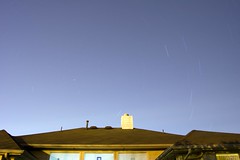
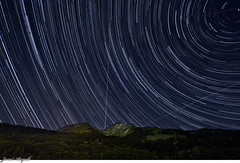

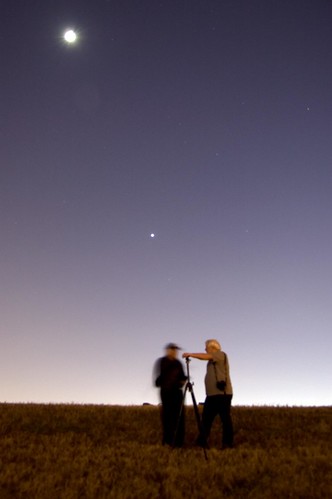
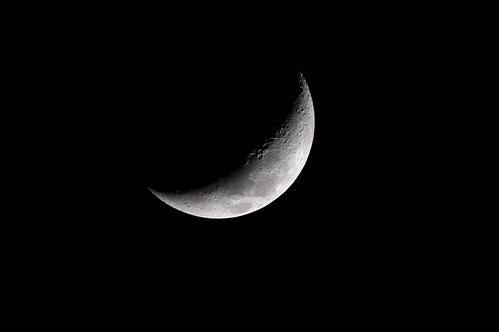
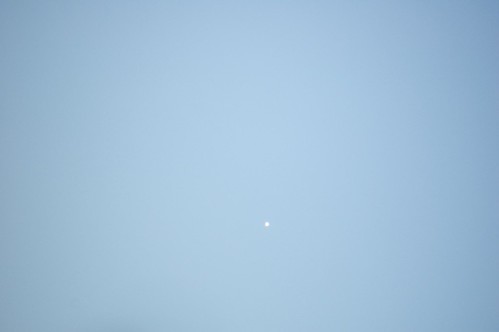

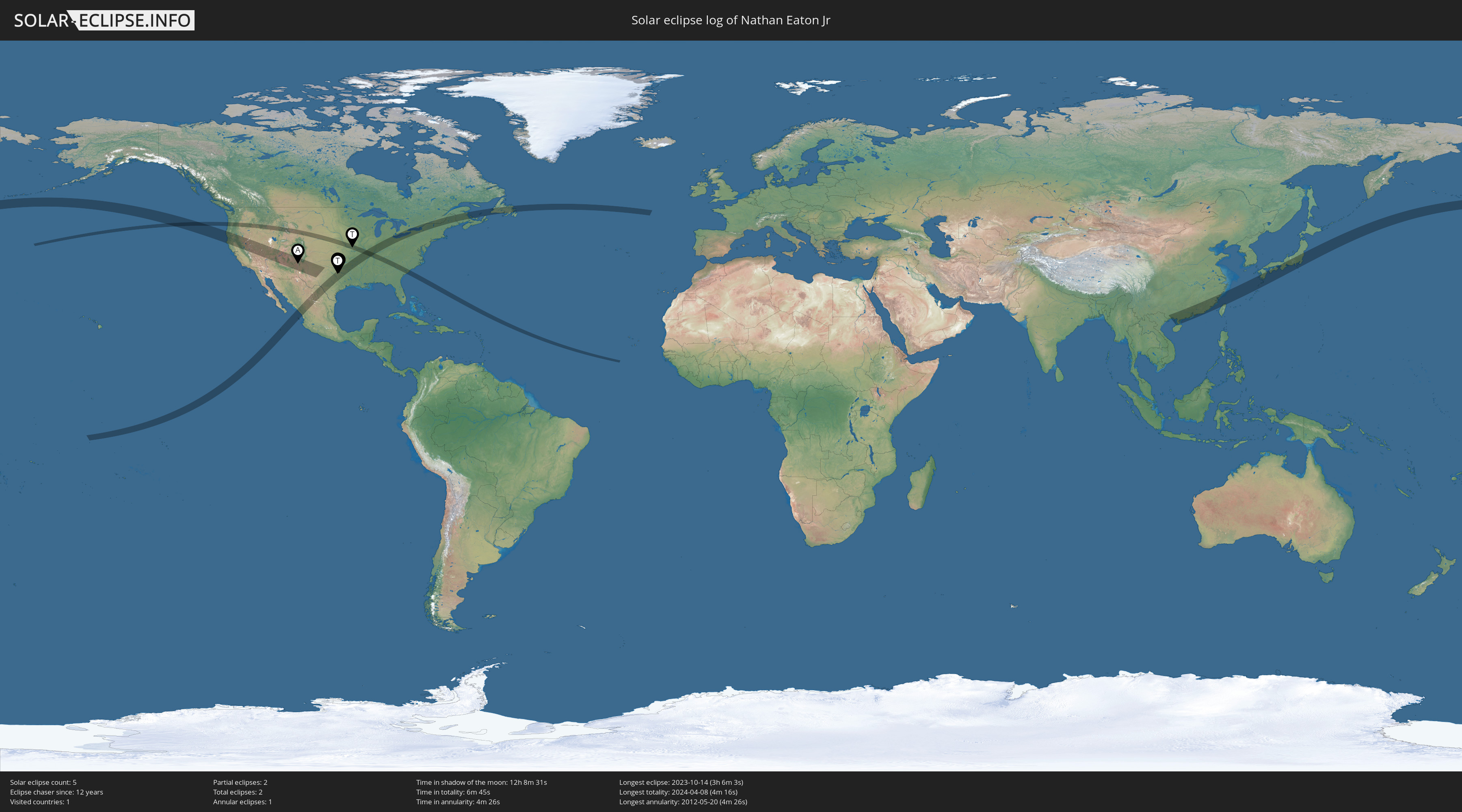



















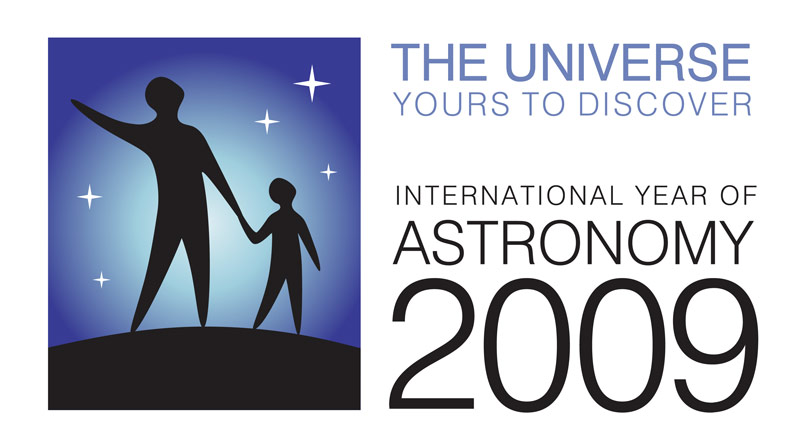 The journey continues beyond 2009... check it out!
The journey continues beyond 2009... check it out!
